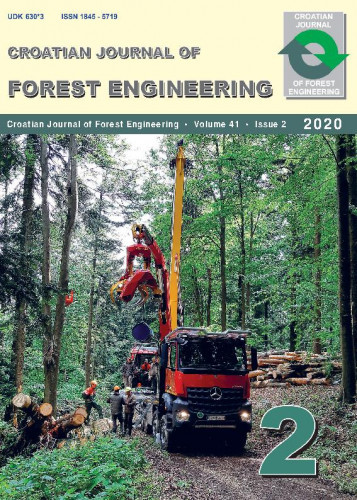The term »loss« should be distinguished from the term »waste« commonly used by forestry practitioners to indicate the difference between gross volume (planned production based on official tariffs) and net volume (produced timber volume) of trees. Volume loss in round wood refers to the difference between the actual volume of round wood and the volume determined based on the prescribed method of measurement and calculation. As a result of prescribed scaling methods and calculations, volume losses appear due to 1) used volume equations, 2) prescribed method of measurement (i.e. measurements of length and mid-length diameter) and 3) deduction of double bark thickness. In Croatia, round wood is cross-cut and transported with bark, while logs are measured and sold without bark. In this way, the bark is an unnecessary ballast in production, but has many possible applications such as energy source, in the production of wooden boards in construction, in nurseries and horticulture, etc. The research was conducted on 225 butt-logs of sessile oak (Quercus petraea (Matt.) Liebl.) ranging in diameter classes from 27.5 cm to 67.5 cm from even-aged forests in the central part of Croatia. Deduction of double bark thickness caused a higher average loss in the volume when using Huber’s equation at 14% and when using Riecke-Newton’s equation at 13.5%. In both volume estimation methods, the loss due to double bark thickness was slightly reduced exponentially as the diameter of but-logs increased. The determined dependence of the bark thickness on diameter of butt-logs over bark indicates the need for correction of the bark deduction tables that are in operational use in Croatian forestry and are provided by trading practices, and since they are not the result of scientific research, they lead to unfair payment between sellers and buyers of round wood.
Sažetak

 Croatian journal of forest engineering : 41,2 (2020) : journal for theory and application of forestry engineering / editor-in-chief, glavni urednik Tibor Pentek, Tomislav Poršinsky.
Croatian journal of forest engineering : 41,2 (2020) : journal for theory and application of forestry engineering / editor-in-chief, glavni urednik Tibor Pentek, Tomislav Poršinsky.